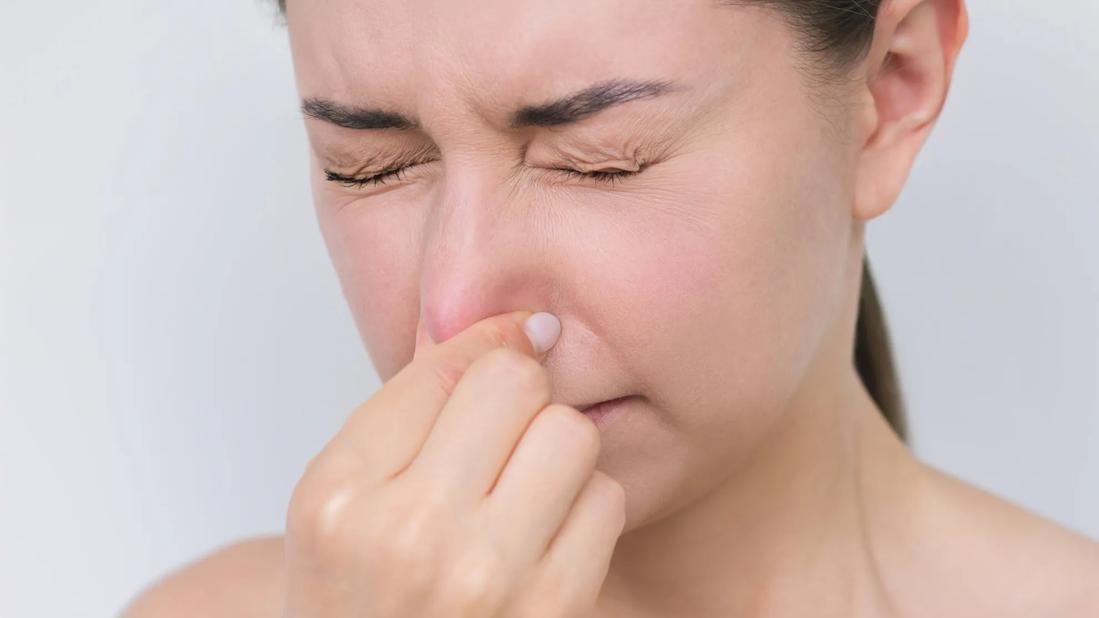5 Ways To Pop Your Ears Safely
You can find sweet relief by swallowing, yawning and doing specialized maneuvers

Sometimes, it’s only when things go a little awry that we start to realize just how much we take for granted. Like when you have a sinus infection. Or when allergy season is in full gear. Or when you’re on an airplane and ear congestion seems almost too much to bear.
You never quite appreciated that feeling of perfectly balanced airflow in your noggin until your ears plug up and you can’t get them to pop.
Have no fear, family medicine specialist Matthew Goldman, MD, is here to give you his best tips for popping your ears safely.
How to pop your ears safely
Sometimes, a clogged ear will go away by itself. Other times, you just can’t help but want to take matters into your own hands and find some relief. But there are right and wrong ways to go about it. So don’t believe any old advice you see on social media or that your best friend’s sister’s father-in-law swears by.
Before we get into the nitty-gritty of how-tos, let’s lay some groundwork.
Your middle ear is the part that starts just after your eardrum on either side of your head. It’s connected to the back of your throat by a tube called the eustachian tube (pronounced “you-STAY-shee-un”). You’ve got two of them — one behind each ear.
“The eustachian tubes help maintain balanced air pressure between the area behind your eardrum and the area outside of it,” Dr. Goldman explains.
When that balance goes ... off-balance, your ears feel full — and you feel that need to pop them.
So, popping your ears is a matter of unblocking your eustachian tube and balancing out the airflow. Here are five ways to do it.
1. The Valsalva maneuver
The Valsalva maneuver helps relieve pressure by forcing air through your eustachian tubes. Here’s how to do it:
- Close your mouth.
- Pinch your nostrils closed.
- Breathe out forcefully, not allowing any air to escape through your mouth or nose.
Bonus: The Valsalva maneuver can also be used for some people to quickly get an abnormal heart rate back to normal.
2. The Toynbee maneuver
The Toynbee maneuver takes a different approach to opening your eustachian tubes. Rather than forcing air into them, this way helps to open the tubes. That allows air to get in.
Here’s how to do it:
- Close your mouth.
- Pinch your nostrils.
- Swallow.
3. Swallow
Your eustachian tubes are typically closed. But they open when you swallow.
“When you open up the eustachian tubes, you give air a chance to get in, which can stabilize the pressure and allow your ears to pop,” Dr. Goldman explains.
This is why you may have heard people recommend chewing gum on airplanes. It’s not the gum itself that helps pop your ears. But gum creates saliva. So, as you repeatedly swallow that saliva, it can help open your tubes and keep the air flowing. Things like mints or sour candies can do the trick, too.
4. Yawn
Like swallowing, yawning opens up your eustachian tubes to pop your ears. The bigger and more convincing the yawn, the better the chances it’ll do the trick.
5. Cold and allergy treatments
Conditions like allergies and sinus infections are notorious for leading to clogged ears. That’s because they can come with a lot of blockage and inflammation that can alter the air pressure behind your ears.
In those cases, treating the symptoms and causes of your discomfort can help pop your ears. Try:
- Saline spray
- Over-the-counter anti-inflammatory medication, like ibuprofen (Advil®)
- Decongestants
- Antihistamines
Getting help for plugged ears
If you’re traveling in a plane, scuba-diving or in the midst of an allergic flare-up, your clogged ears likely aren’t a major problem and should resolve pretty quickly.
But clogged ears that persist for days on end or are accompanied by other symptoms can indicate a more serious issue, like an ear infection or swimmer’s ear. Chronic eustachian tube dysfunction isn’t common, but it needs medical attention and, in some cases, surgery.
And pay attention to issues like:
- Pain
- Discharge from your ear
- Dizziness
- Hearing loss
- Ringing in your ear
In these cases, it’s time to see a healthcare provider. They’ll be able to determine the root cause of your issues and figure out a treatment plan.
Bottom line? Usually, simple techniques can help restore balance and relieve pressure. But if your symptoms linger or worsen, don’t tough it out — talk to a healthcare provider to rule out a more serious issue. Sweet, sweet relief is on the way.